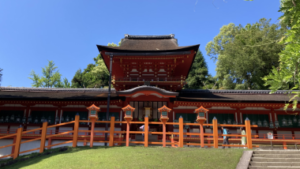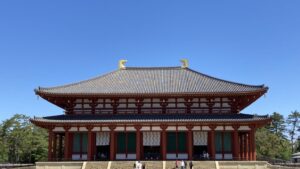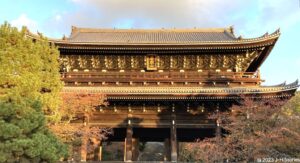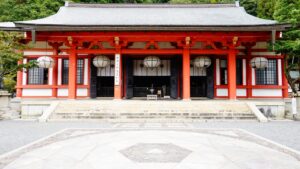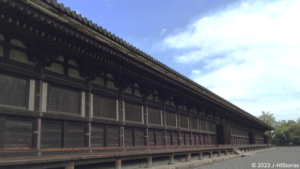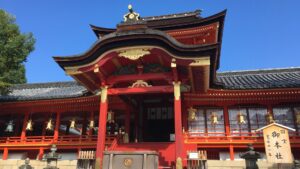Kasugataisha: A 1,300-Year-Old Sacred Shrine in NaraNew!!
Kasgataisha Shrine in Nara has a 1300-year-old history. Feeling the spituality from the sacred deer, mountains, and forests, the all are the divinity of Kasuga's God.
Kohfukuji, 1,300 Years of Fujiwara Clan's Temple and Its Attractions
Kohfukuji Temple in the heart of Nara is a treasure trove of over 30 National Treasures, including the majestic Chukondo Hall, the five-story pagoda, as the influential Fujiwara clan who had stood at the center of power for over 1,300 years. Don't miss out on exploring the beginning of Fujiwara clan's prosperity starting Kamatari and Fuhito.
Chion-in Temple, Honen's Teaching to Save the People
Chion-in Temple, the head temple of the Jodo sect, is located at the foot of Mt. Higashiyama in Kyoto, built by Tokugawa Ieyasu (1543-1616, 徳川家康) by allotting the temple grounds of Shorenin Monzeki. Hidetada, Ieyasu's successor, donated to the construction of the temple gate, ”Sanmon(三門)” or Three Gate, the largest gate in Japan. Although commonly […]
Kyoto Imperial Palace, Successive Emperor's Residence
The Heian-kyo had been the center of the nation where the successive emperors resided for over 1200 years since the capital relocation from Nara in 794 by the 50th Emperor Kanmu until 1869 when Emperor Meiji moved to Tokyo, one year after the Meiji Restoration. The highlight is the beautiful Shishinden Hall with its cypress […]
Kuramadera Temple's Power Contributed Minamoto Yoshitsune to Winning the Genpei War
Kuramadera Temple, nestled deep in Mt. Kurama in the northern part of Kyoto, is renowned for its vortexes and the breathtaking natural beauty of trees that have grown over the years. Upon passing through the Niomon Gate, a meandering path guides visitors to the main hall. In the Heian period (794-1185), the esteemed female writer […]
Kiyomizu-dera Temple, Kannon Brought Victory to a Noble Warrior, Tamuramaro
Kiyomizu-dera Temple recognized as one of the Historic Monuments of Ancient Kyoto and a World Cultural Heritage site, was established halfway up Mt. Otowa in 778, merely six years before the capital relocation from Nara’s Heijo-kyo. The main image is the Eleven-headed Thousand-armed Kannon Bodhisattva, revered for aiding people from difficulties. The most enchanting feature […]
Hiraizumi: A prosperous city of the Oshu Fujiwara clan that lasted 100 years
The cedar-lined Tsukimizaka (Moon Viewing) slope of Chuson-ji Temple in a solemn mountain atmosphere brings you to the Konjikido Golden Hall, which retains its appearance of those days. Stepping into it, you may feel Fujiwara Kiyohira’s aspiration to build a Buddhist Land (an ideal peaceful nation on the Buddha’s teaching) from the entire structure. It […]
Unveiling the Secrets of Matsunoo Taisha, the Best Sake Brewery Shrine
Matsunoo Taisha Shrine stands as one of Japan’s revered three sake shrines, alongside Omiwa Jinja, and Umemiya Jinja, all venerating the sake deity worshipped by sake brewers. Upon crossing the Romon Gate, you gaze at the Shinyoko on the left, a warehouse for portable shrines. Here, a mesmerizing array of a variety of Komodaru straw […]
Who built Sanjusangen-do Hall and what does Sanjyusan mean?
The Sanjyusangen-do Hall (literally 33 intervals), officially Rengeoin Temple, resides in the heart of Kyoto, Constructed in 1164 by the retired Emperor Go-Shirakawa (1127~1192, 後白河天皇), or Go-Shirakawa-In with the financial support of Samurai, Taira Kiyomori, to pray for the safety and prosperity of the nation and people. This remarkable 121-meter-long wooden structure features 33 spaced […]
Why did so many emperors, court nobles, and Samurai visit the Iwashimizu Hachimangu Shrine?
In the year 860, the Iwashimizu Hachimangu Shrine was established by an oracle who voiced a fervent wish to stand in proximity to the Imperial palace, safeguarding the nation. Thus, the venerated Hachiman deity was enshrined as a national guardian deity in Kyoto along the head shrine of Hachiman Okami, Usa Jingu Shrine in Kyushu. […]

